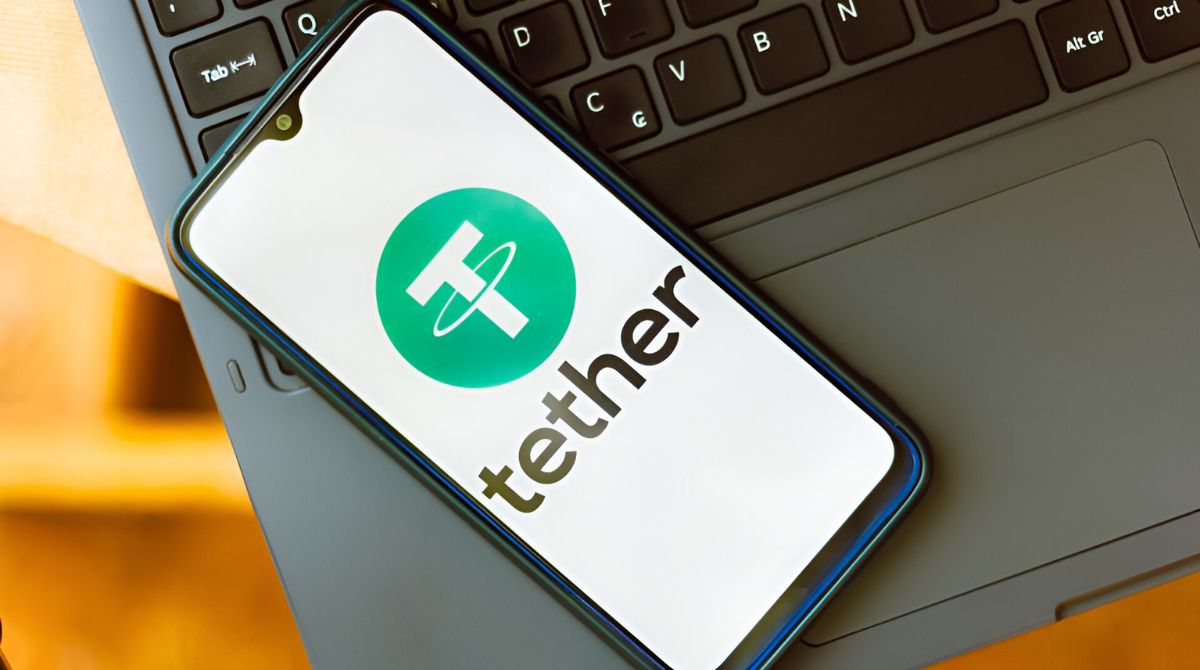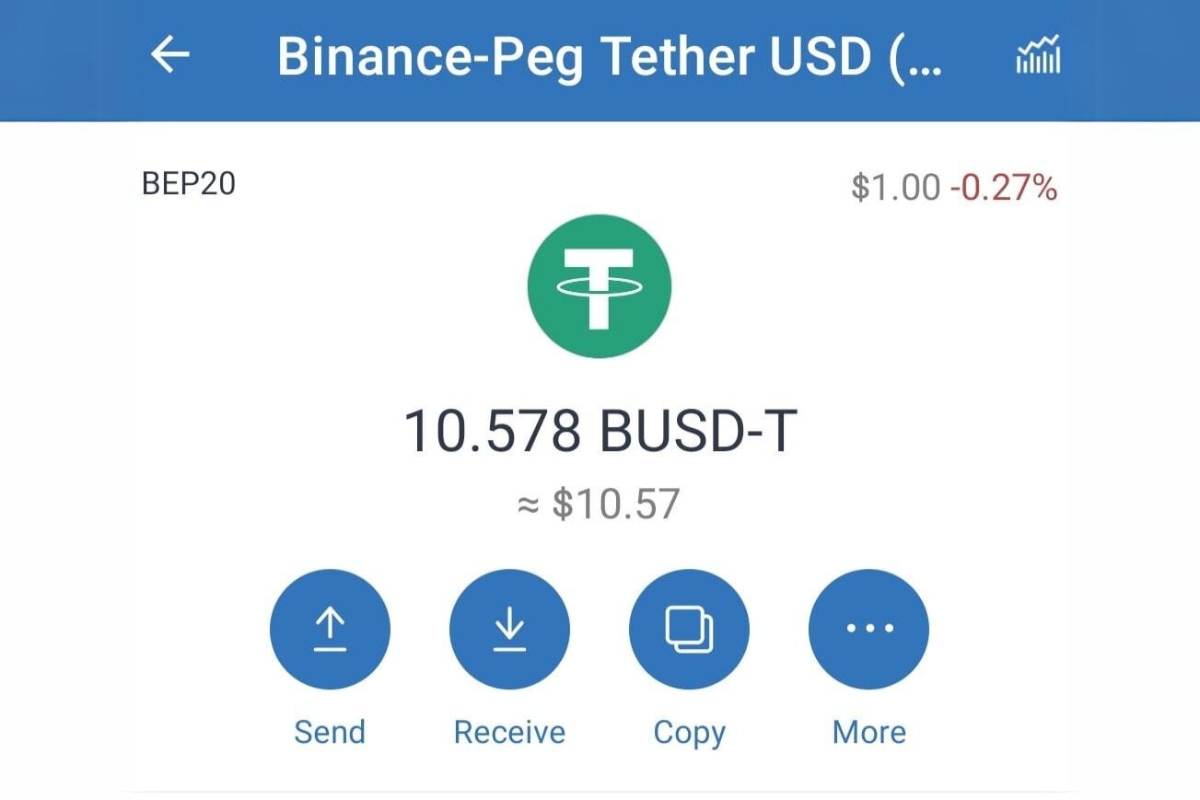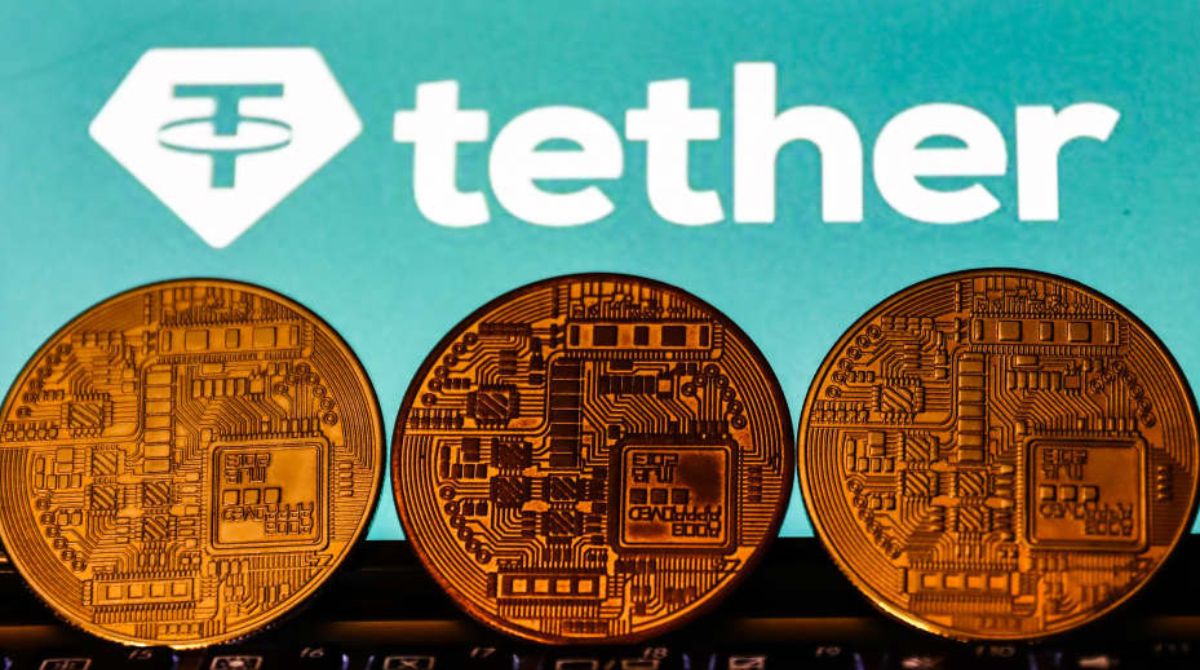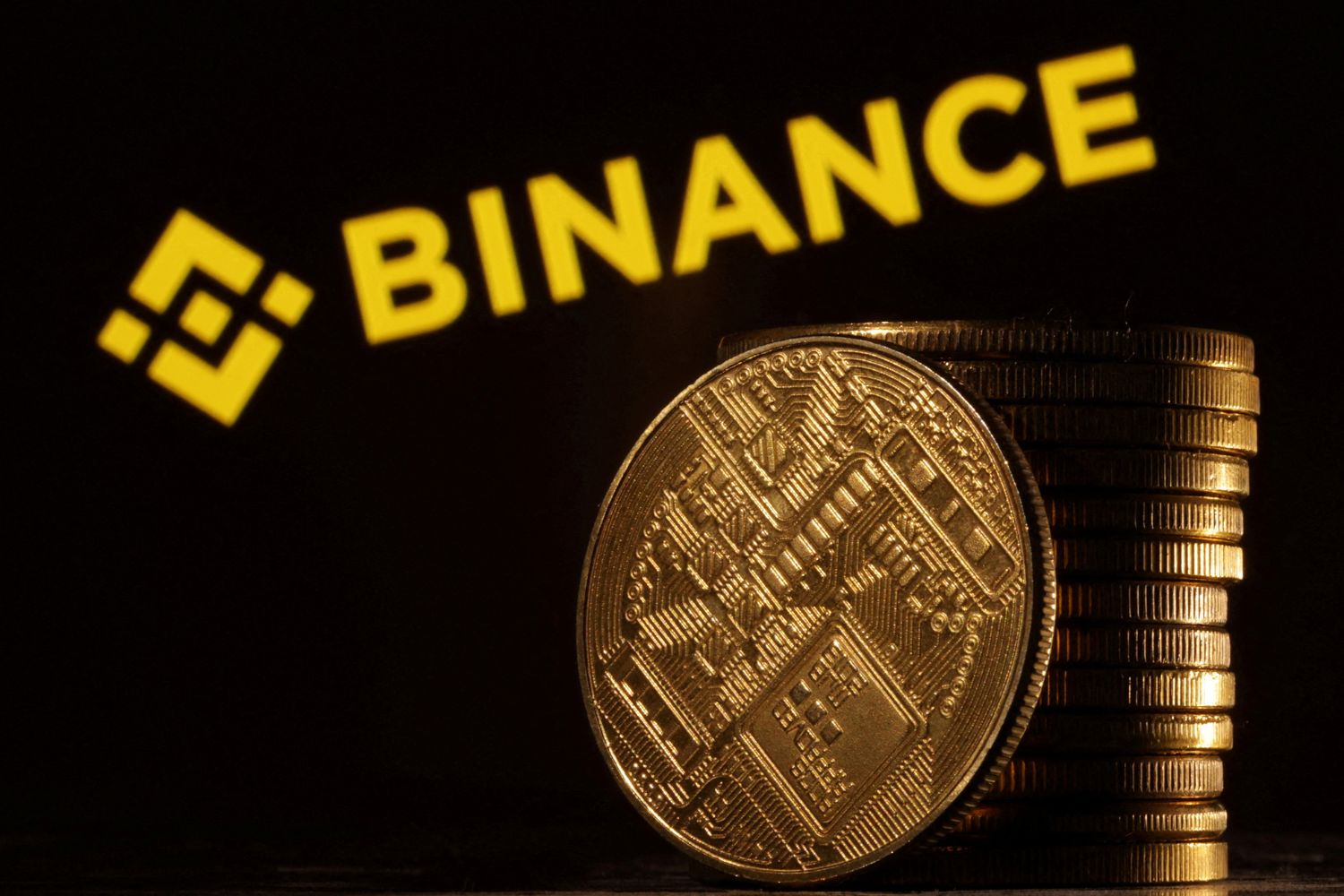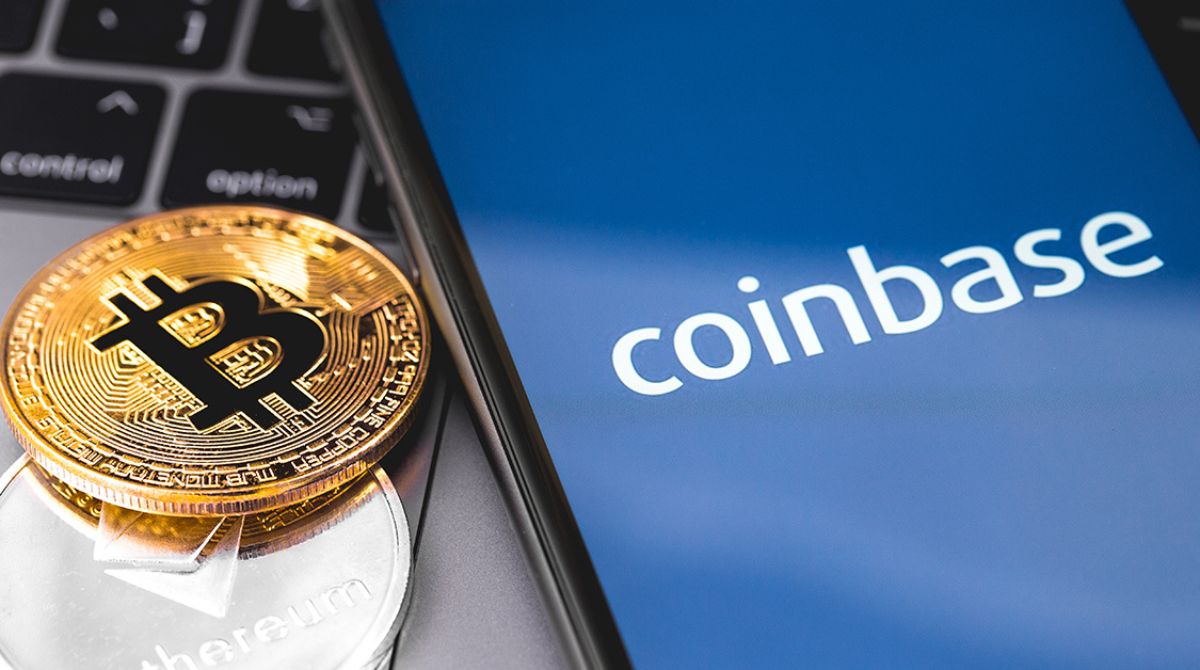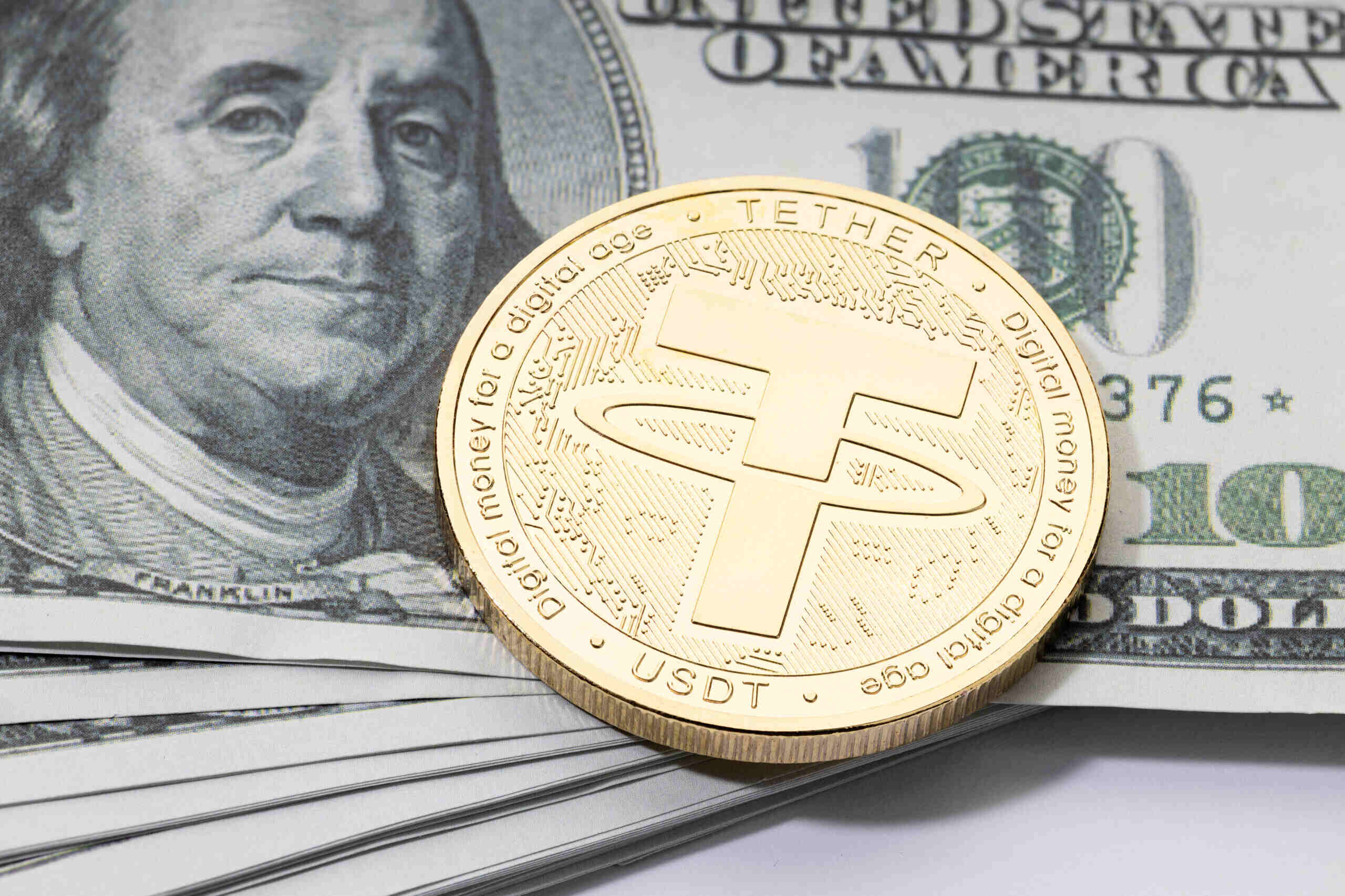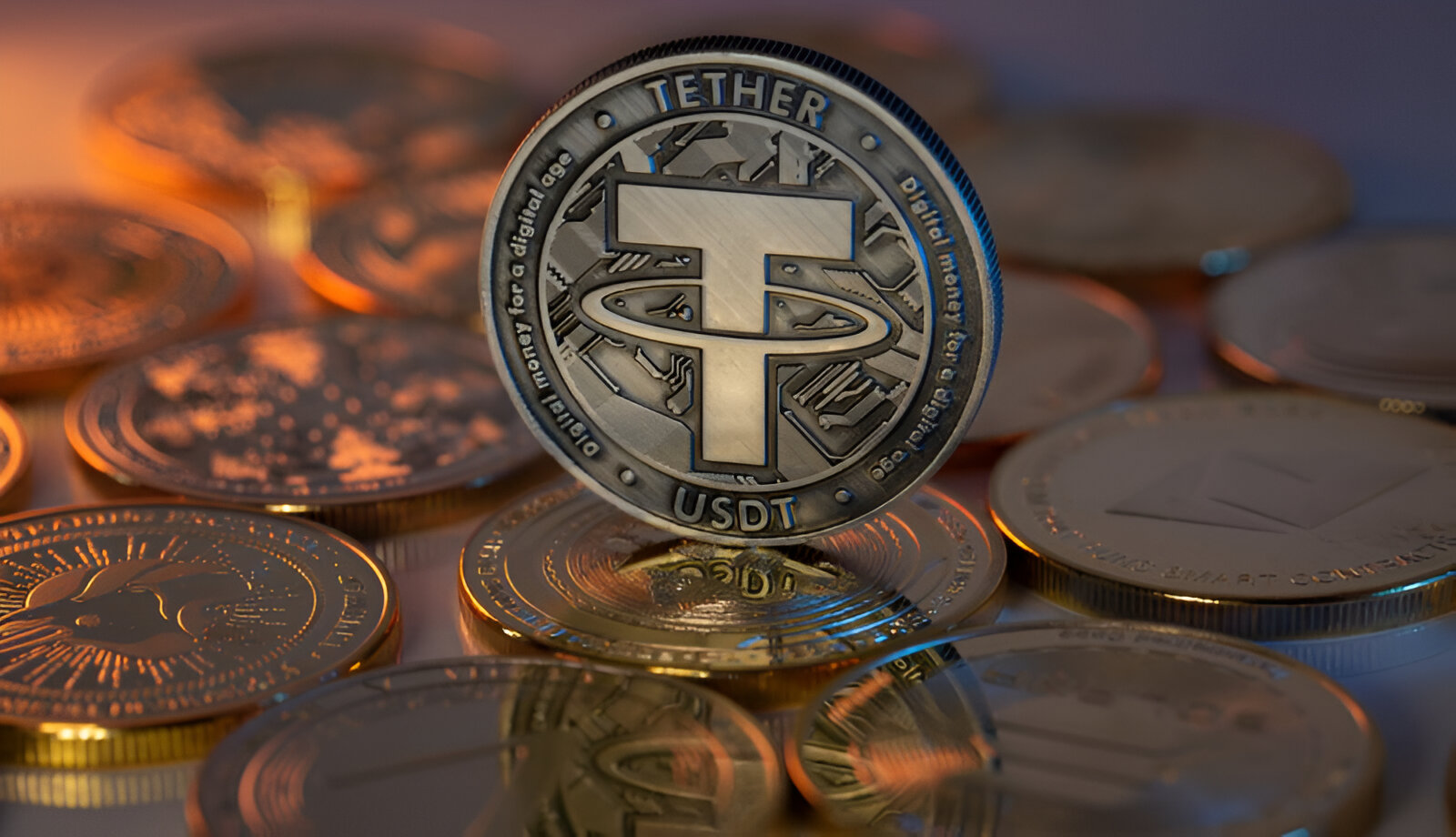Introduction
Welcome to the world of cryptocurrency wallets! If you’re familiar with digital currencies, you’ve probably heard of Tether (USDT), a popular stablecoin that is pegged to the value of the US dollar. In order to safely store and manage your Tether, you’ll need a Tether wallet. In this guide, we’ll walk you through the process of getting a Tether wallet and how to use it.
A Tether wallet is a digital wallet that allows you to securely store, send, and receive Tether tokens. It acts as a secure vault for your digital assets, providing you with full control over your funds. Just like a physical wallet that holds your cash, a Tether wallet keeps your Tether tokens safe and accessible.
There are several types of Tether wallets available, ranging from hardware wallets to mobile wallets and online wallets. Each type offers its own benefits and security features. It’s important to choose the right Tether wallet that suits your needs and preferences.
In this guide, we will explain how to download, install, and set up a Tether wallet. We will also cover how to fund your wallet with Tether tokens and how to send and receive Tether securely.
When choosing a Tether wallet, it’s crucial to prioritize security. Your Tether wallet should offer strong encryption, two-factor authentication, and backup options to ensure the safety of your funds. We will provide recommendations on the best security measures to protect your Tether wallet.
If you’re new to the world of cryptocurrencies, don’t worry! This guide will break down the entire process in a simple and easy-to-understand manner, so even if you’re not tech-savvy, you’ll be able to get a Tether wallet up and running in no time.
So, if you’re ready to take control of your Tether tokens and securely manage your digital assets, let’s dive into the world of Tether wallets and get started on your cryptocurrency journey.
What is a Tether Wallet?
A Tether wallet is a digital wallet specifically designed for storing, sending, and receiving Tether (USDT) tokens. Tether is a popular cryptocurrency known as a stablecoin, meaning its value is pegged to a traditional fiat currency, in this case, the US dollar.
Similar to other types of digital wallets, a Tether wallet provides a secure and convenient way to store your Tether tokens. It allows you to access and manage your Tether funds anytime and anywhere, as long as you have an internet connection.
One important thing to note is that Tether is available on several blockchain networks, such as Ethereum, Tron, and Omni. This means that there are different types of Tether wallets depending on the blockchain network they support.
Regardless of the specific blockchain network, a Tether wallet gives you complete control over your funds. It generates and stores your private key, which is essentially the password needed to access your Tether tokens. With this private key, you can securely send and receive Tether tokens from your wallet.
There are different types of Tether wallets available, each catering to different user preferences and security requirements. Here are the main types of Tether wallets:
- Hardware Wallets: These are physical devices that store your private keys offline, providing the highest level of security. Hardware wallets are immune to malware attacks and are considered the most secure option for storing Tether tokens.
- Software Wallets: These are digital wallets that can be accessed via mobile or desktop applications. They offer a balance between convenience and security, as long as you take proper precautions like using strong passwords and enabling two-factor authentication.
- Web Wallets: These wallets are accessed through web browsers and usually store your private keys on a web server. While they offer convenience, web wallets are generally considered to be less secure than hardware or software wallets, as they are more susceptible to online attacks.
Regardless of the type of Tether wallet you choose, it’s important to prioritize security. Make sure to do thorough research, read user reviews, and choose a reputable wallet provider that has a strong track record of security.
In the next section, we will explore the factors to consider when choosing the right Tether wallet for your needs.
Types of Tether Wallets
When it comes to Tether wallets, there are several different types available, each offering its own set of features, security measures, and convenience. Here are the main types of Tether wallets:
- Hardware Wallets: Hardware wallets are physical devices designed to securely store your Tether tokens offline. They provide the highest level of security due to their isolation from the internet. Hardware wallets are immune to malware attacks and keep your private keys stored in a secure chip. Some popular hardware wallets that support Tether include Ledger and Trezor.
- Software Wallets: Software wallets are digital wallets that can be installed on your mobile device or computer. They offer convenience and accessibility, allowing you to manage your Tether tokens on the go. Software wallets can be further categorized into mobile wallets and desktop wallets.
- Mobile Wallets: Mobile wallets are applications that you can download onto your smartphone or tablet. They provide a user-friendly interface and allow you to access your Tether tokens anytime and anywhere. Some popular mobile wallets that support Tether include Trust Wallet and Exodus.
- Desktop Wallets: Desktop wallets are software applications that you can install on your computer. They offer similar functionality to mobile wallets but are designed for use on desktop or laptop devices. Desktop wallets are considered more secure than web wallets as they store your private keys locally. Some popular desktop wallets that support Tether include Atomic Wallet and MyEtherWallet.
- Web Wallets: Web wallets, also known as online wallets, are accessed through web browsers. They are convenient as they can be accessed from any device with an internet connection. However, web wallets store your private keys on an online server, making them more susceptible to hacking attempts. It is crucial to choose a reputable web wallet provider if you opt for this type of wallet. Tether.to is an example of a web wallet for Tether.
It’s important to carefully consider your needs and weigh the pros and cons of each type of Tether wallet. If security is your top priority, hardware wallets are the best choice. For mobile convenience, mobile wallets are a great option. If you prefer to manage your Tether tokens on your computer, desktop wallets provide a good balance between security and accessibility. Web wallets can be convenient but may come with higher security risks.
Once you have decided on the type of Tether wallet that suits you best, the next step is to download and install the wallet onto your preferred device. In the next section, we will guide you through the process of getting your Tether wallet up and running.
Choosing the Right Tether Wallet
Choosing the right Tether wallet is crucial to ensure the security and convenience of storing, sending, and receiving your Tether tokens. With so many wallet options available in the market, it’s important to consider the following factors when making your decision:
- Security: The security of your Tether wallet should be your top priority. Look for wallets that offer strong encryption and multiple layers of security. Hardware wallets are considered the most secure option as they keep your private keys offline, protecting them from potential online threats.
- Compatibility: Make sure the Tether wallet you choose is compatible with the blockchain network on which Tether operates. Tether is available on Ethereum, Tron, and Omni networks, so ensure that the wallet you select supports the specific blockchain network you prefer.
- User-Friendly Interface: Look for a wallet with a user-friendly interface that makes it easy for you to navigate and manage your Tether tokens. A simple and intuitive interface can save you time and frustration, especially if you’re new to the world of cryptocurrencies.
- Mobile Accessibility: Consider whether you need a wallet that can be accessed on your mobile device. Mobile wallets allow you to manage your Tether tokens on the go, providing convenience and flexibility. If you frequently use your smartphone or tablet, a mobile wallet may be the best option for you.
- Reputation and Reviews: Do thorough research and read user reviews to gauge the reputation of the wallet provider. Look for wallets that have a strong track record of security and positive user experiences. This will give you confidence in the stability and reliability of the wallet.
- Additional Features: Consider any additional features or integration options that are important to you. Some wallets offer features like built-in exchange services, portfolio tracking, or integration with decentralized applications (DApps). Determine which features are important to you and choose a wallet that meets your specific requirements.
By considering these factors, you can narrow down your options and choose the Tether wallet that best suits your needs and preferences. It’s essential to strike a balance between security, convenience, and compatibility to ensure a smooth and secure Tether token management experience.
Now that you have an understanding of the factors to consider when selecting a Tether wallet, the next step is to download and install the wallet onto your preferred device. In the next section, we will guide you through the process of setting up your Tether wallet.
How to Download a Tether Wallet
Downloading a Tether wallet is the first step towards securely storing and managing your Tether tokens. The process may vary slightly depending on the type of wallet you choose, but here are the general steps to download a Tether wallet:
- Research Wallet Options: Begin by researching and choosing the type of Tether wallet that suits your needs. Consider factors such as security, compatibility, and user-friendliness.
- Visit the Official Website: Once you have decided on a specific wallet, visit the official website of the wallet provider. Ensure that you are on the legitimate website to avoid scams or phishing attempts.
- Locate the Download Section: Look for the download section on the website. The download section is usually prominently displayed or can be found under a ‘Get Started’ or ‘Download’ tab.
- Select Your Device: Choose the version of the wallet that is compatible with your device’s operating system. For example, if you’re using an Android phone, select the Android version of the wallet.
- Click on the Download Button: Once you have selected the correct version, click on the download button to start the download process. The file will be downloaded to your device.
- Install the Wallet: Once the download is complete, locate the downloaded file on your device and open it. Follow the on-screen instructions to install the wallet on your device. The installation process may vary depending on your device and operating system.
- Set Up Your Wallet: After the wallet is installed, launch the application. You will be guided through the process of setting up your wallet, including creating a new wallet or importing an existing one. Follow the prompts and provide the necessary information to complete the setup process.
It’s important to download wallets only from official sources to ensure that you are getting the legitimate and secure version of the wallet. Avoid downloading wallets from unknown or third-party sources, as they may be compromised or contain malware.
Remember to exercise caution and be mindful of your device’s security settings. Keep your device and wallet software updated to protect against potential vulnerabilities. Additionally, always verify the website and sources you’re downloading from, and be wary of phishing attempts or fake wallet applications.
Once you have successfully downloaded and installed your Tether wallet, you are ready to proceed to the next section, where we will guide you through the process of setting up your Tether wallet.
Installing a Tether Wallet
Now that you have downloaded the Tether wallet application, the next step is to install it on your device. The installation process may vary slightly depending on the type of wallet you have chosen, but here are the general steps to install a Tether wallet:
- Locate the Downloaded Wallet: Go to the location on your device where the Tether wallet application was downloaded. It is usually in your device’s “Downloads” folder or in the location you specified during the download.
- Open the Wallet Installer: Locate the downloaded wallet file and open it. The installer file will have a specific extension based on the operating system you are using, such as .exe for Windows or .dmg for macOS.
- Follow the Installation Instructions: Once you open the installer file, you will be guided through the installation process. Read and follow the on-screen instructions carefully to ensure a successful installation. You may need to agree to the terms and conditions of the wallet provider.
- Select the Installation Location: During the installation process, you may be prompted to choose the location where you want to install the Tether wallet. Select an appropriate location on your device’s hard drive and proceed with the installation.
- Wait for the Installation: The installer will now proceed to install the Tether wallet on your device. The duration of the installation process may vary, so be patient and let it complete. Avoid interrupting the installation to prevent any potential errors.
- Launch the Wallet: Once the installation is complete, you can usually find the Tether wallet application in your device’s application menu or desktop. Click on the wallet icon to open the application.
After following these steps, you should have successfully installed the Tether wallet on your device. Ensure that you keep your wallet application updated with the latest version provided by the wallet provider. Regularly updating your wallet helps to ensure you have the latest security patches and features.
Note that during the installation process, you may be prompted to set up a password, seed phrase, or other security measures. It is essential to choose strong and unique passwords and store your seed phrase securely. These security measures help protect your Tether tokens from unauthorized access.
Now that you have installed the Tether wallet, the next step is to set it up and prepare it for storing and managing your Tether tokens. In the next section, we will guide you through the process of setting up your Tether wallet.
Setting Up Your Tether Wallet
Now that you have installed the Tether wallet on your device, it’s time to set it up and prepare it for securely storing and managing your Tether tokens. The setup process for Tether wallets may vary slightly depending on the type of wallet you have chosen, but here are the general steps to set up your Tether wallet:
- Launch the Tether Wallet: Open the Tether wallet application on your device by clicking on the wallet icon in your application menu or desktop.
- Create a New Wallet or Import an Existing One: Depending on whether you are setting up a new wallet or importing an existing one, choose the relevant option. If creating a new wallet, you might be asked to provide a strong password. If importing an existing wallet, follow the instructions provided by the wallet to import your wallet by entering your private key or recovery phrase.
- Backup Your Wallet: After creating a new wallet or importing an existing one, it is crucial to back up your wallet. Follow the wallet’s instructions to create a backup of your wallet’s seed phrase or private key. This backup is essential for recovery in case you lose access to your wallet or your device.
- Set Additional Security Measures: Many Tether wallets offer additional security measures such as two-factor authentication (2FA) or biometric recognition. Enable these security features to add an extra layer of protection to your wallet.
- Explore the Wallet’s Features: Familiarize yourself with the features and functionalities of the Tether wallet. Take some time to navigate through the wallet’s user interface and settings. Understand how to access your Tether balance, send and receive Tether tokens, and view transaction history.
- Ensure Wallet Updates: Regularly check for updates to the wallet application provided by the wallet provider. Keeping your wallet updated ensures that you have the latest security patches and features.
During the setup process, it is essential to pay close attention to the details and follow the wallet’s instructions carefully. Choose strong and unique passwords, and store your wallet’s backup information securely in a location separate from your device.
Remember to exercise caution and be mindful of potential phishing attempts or scams. Always verify the website or source you are using to set up your Tether wallet to ensure it is legitimate.
With your Tether wallet now set up, you are ready to securely store, send, and receive Tether tokens. In the next section, we will discuss how to fund your Tether wallet so you can start managing your digital assets.
Funding Your Tether Wallet
Now that you have set up your Tether wallet, it’s time to fund it with Tether tokens. Funding your Tether wallet allows you to store and manage your Tether tokens and engage in various transactions. Here are the general steps to fund your Tether wallet:
- Obtain Tether Tokens: Before you can fund your Tether wallet, you need to acquire Tether tokens. You can obtain Tether tokens from reputable cryptocurrency exchanges that support Tether. Some popular exchanges that offer Tether include Binance, Coinbase, and Kraken. Purchase Tether tokens using your local currency or exchange them for other cryptocurrencies.
- Withdraw Tether to Your Wallet: Once you have obtained Tether tokens from an exchange, initiate a withdrawal from the exchange platform to your Tether wallet. Ensure that you have selected the correct Tether network (such as Ethereum or Tron) that your wallet supports. Follow the withdrawal process on the exchange platform, providing the necessary details of your Tether wallet address.
- Confirm the Transaction: After initiating the withdrawal, the exchange platform will typically send a confirmation email or provide a two-factor authentication (2FA) code for verification. Follow the instructions provided by the exchange to complete the transaction. Once confirmed, the Tether tokens will be sent from the exchange to your Tether wallet.
- Check your Tether Balance: After the transaction is confirmed and processed, check your Tether wallet balance to ensure that the Tether tokens have been successfully deposited. The balance should reflect the amount of Tether tokens you have funded.
- Keep Track of Transactions: It’s important to keep track of your Tether transactions. Most Tether wallets allow you to view your transaction history within the wallet’s interface. This helps you monitor incoming and outgoing transactions, ensuring the accuracy of your wallet balance.
Remember, when funding your Tether wallet, it is crucial to use reputable cryptocurrency exchanges and ensure the accuracy of the wallet address you are withdrawing to. Double-check the wallet address to avoid any potential errors or sending the tokens to the wrong address.
Additionally, you should exercise caution when sharing your wallet address. Only share your Tether wallet address with trusted individuals or entities to avoid the risk of scams or phishing attempts.
With your Tether wallet funded, you are now ready to send, receive, or hold your Tether tokens securely. In the next section, we will guide you through the process of sending and receiving Tether using your Tether wallet.
Sending and Receiving Tether
Now that you have funded your Tether wallet, you can easily send and receive Tether tokens using your wallet. Sending and receiving Tether allows you to engage in transactions with other individuals, businesses, or exchanges. Here’s a step-by-step guide on how to send and receive Tether:
- Sending Tether:
- Open your Tether wallet and navigate to the “Send” or “Send Tether” section.
- Enter the recipient’s Tether wallet address. It is crucial to double-check the address to ensure accuracy. You may be able to scan a QR code or paste the address if provided by the recipient.
- Specify the amount of Tether you wish to send. Ensure that you have enough balance to cover the transaction and consider any applicable transaction fees.
- Review the transaction details and confirm the sending of Tether. Depending on your wallet, you may need to verify the transaction with a password, biometric authentication, or other security measures.
- Once the transaction is confirmed, the Tether tokens will be sent from your wallet to the recipient’s wallet. The recipient will be able to see the incoming transaction in their Tether wallet.
- Receiving Tether:
- Provide your Tether wallet address to the sender. You can usually find your wallet address in the “Receive” or “Receive Tether” section of your Tether wallet.
- If the sender is nearby, you can let them scan the QR code associated with your Tether wallet address.
- If the sender is far away, you can share your Tether wallet address by copying and pasting it or sending it via a secure communication channel.
- Once the sender initiates the transaction and completes the sending process, you will receive the Tether tokens in your wallet.
- Your wallet will show the incoming transaction, and your Tether balance will be updated accordingly.
It is important to note that transactions on the Tether network, like any blockchain network, may take some time to be confirmed. The confirmation time can vary depending on network congestion and transaction fees.
Always double-check the recipient’s wallet address when sending Tether to ensure you are sending it to the correct destination. Once a transaction is confirmed and included in a block, it is irreversible, so it is crucial to exercise caution and verify all transaction details before confirming.
Now that you know how to send and receive Tether using your Tether wallet, you can easily engage in transactions and interact with others in the world of cryptocurrencies.
Security Measures for Your Tether Wallet
Ensuring the security of your Tether wallet is of utmost importance to protect your funds from unauthorized access or potential cyber threats. Here are some essential security measures you should consider implementing for your Tether wallet:
- Strong Wallet Password: Set a strong and unique password for your Tether wallet. Avoid using common passwords and consider using a combination of uppercase and lowercase letters, numbers, and special characters.
- Two-Factor Authentication (2FA): Enable two-factor authentication for an additional layer of security. This typically involves linking your Tether wallet to an authentication app on your smartphone, which generates a verification code that you need to enter along with your password.
- Secure Access: Avoid accessing your Tether wallet on public or unsecured Wi-Fi networks. Use a trusted and secure internet connection to minimize the risk of potential data interception or unauthorized access.
- Backup Your Wallet: Regularly create backups of your Tether wallet. Wallet backups typically consist of a recovery phrase or private key that can be used to restore your wallet if it becomes lost or inaccessible. Store these backups securely, offline, and in multiple locations.
- Update Your Wallet Software: Keep your Tether wallet software up to date with the latest version provided by the wallet provider. Regular updates often include security enhancements and bug fixes that help protect against potential vulnerabilities.
- Be Wary of Phishing Attempts: Be cautious of phishing attempts wherein scammers may try to trick you into revealing your wallet password or recovery phrase through deceptive emails, websites, or messages. Verify the authenticity of any communications related to your Tether wallet and never share sensitive information with unknown or untrusted sources.
- Consider a Hardware Wallet: Hardware wallets provide an extra layer of security by storing your private keys offline in a secure physical device. Consider using a hardware wallet, such as Ledger or Trezor, to store your Tether tokens for enhanced protection.
Additionally, it is crucial to stay informed about the latest security practices and trends in the cryptocurrency space. Stay updated on security news, follow official wallet provider announcements, and undertake regular due diligence to protect your Tether assets.
Remember, while these security measures significantly enhance the safety of your Tether wallet, no security measure is completely foolproof. It is important to remain vigilant and use common sense when engaging in cryptocurrency transactions.
By implementing these security measures, you can have peace of mind knowing that your Tether wallet is well-protected and your funds are secure.
Conclusion
Congratulations! You have reached the end of our guide on how to get a Tether wallet. By following the steps outlined in this guide, you have learned about the importance of having a Tether wallet, the different types of Tether wallets available, and how to choose the right one for your needs. We have also covered the processes of downloading, installing, and setting up your Tether wallet, as well as funding it with Tether tokens. Additionally, you gained insights into how to send and receive Tether securely and the importance of implementing proper security measures.
It is essential to always prioritize the security of your Tether wallet and follow best practices to safeguard your digital assets. Secure passwords, two-factor authentication, regular backups, and staying vigilant against scams and phishing attempts are all part of maintaining a secure environment for your Tether tokens. Remember to update your wallet software, use reputable wallet providers, and keep up-to-date with the latest security practices in the cryptocurrency space.
We hope that this guide has provided you with the necessary knowledge and confidence to navigate the world of Tether wallets. As you continue your cryptocurrency journey, remember to stay informed, seek out reputable sources for information, and exercise caution when dealing with your Tether tokens and other digital assets.
Now that you are equipped with the knowledge and understanding of Tether wallets, go ahead and start managing your Tether tokens securely and confidently with your newly acquired Tether wallet. Happy investing!







